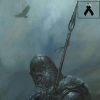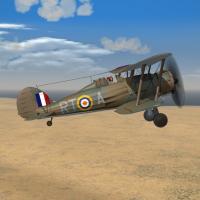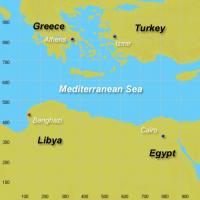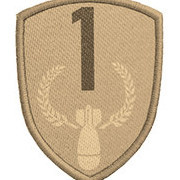Leaderboard
Popular Content
Showing most liked content on 12/30/2017 in Files
-
1 point
Version
102 downloads
SF2 WW2 Hawker Hurricane IIC (Trop), 335 Squadron (MTO/RHAF) -- Something for the WW2 MTO players -- = For SF2, Full-5 Merged (Reccomended/Preferred) = *There is a distinct possibility that this mod will work in SF/Wo* 1stGen game installs. After all, it's just a skin and decals!! However, the decal radomization will not be functional in SF/Wo* 1stGen game installs* A new Desert camo skin for Raven's Hurricane IIC (Trop), recreates 335 Squadron, Royal Hellinc Air Force, as flown with the RAF in Egypt and the Western Desert. This skin is still in bmp format, so it's usable in SF/Wo*. Decal randomization is TRUE. All the markings are decals, most of which (serials, plane-in-group letters) are reused from other skins sets As always, fairly easy to follow, highly detailed install instructions are included. So, please =READ= them. Also, give the "Notes" section a read too. With Thanks To Raven for the bird! Happy Hunting! wrench kevin stein -
1 point
Version
339 downloads
SF2 WW2 Gloster Gladiator Mk.2 and Sea Gladiator by Cocas -- Something for the WW2 ETO/MTO players -- = For SF2, Full-5 Merged (Reccomended/Preferred) = *This mod will most likely =NOT= work in SF/Wo* 1stGen game installs, due to some of the modifications made to fit them into the SF2 environment, expecially in the case of the latest MAX exported user to create them. Users that try, do so at their own risk.* Some modification, tweeks, reskin and so forth for Cocas's fun little Gladiators; this package contains SF2 =ONLY= versions of his Gladiator Mk.2 and Sea Gladiator. Skins and decals included are... Gladiator Mk.2 112 Squadron, RAF as seen at Helwan, Egypt 1940 1 Squadron, SAAF, in East Africa 1940-ish 1ère Escardrille de Chasse, Belgian AF, 1940 Sea Gladiator, Royal Navy RN Markings are rather 'generic'; the first 18 serials are those that HMS Eagle dropped off on Malta, and eventually became the Hal Far Fighter Flight. Those 100% historicaly known to have been used on Malta are marked with a star (*). All skins are in jpg format. Decal Randomization is set to TRUE for all skins. New SF2 hangar screens are included, as is a destroyed model, pilot figure, and engine sound. You shoud have the 303 MGs in your /Guns folder already; it is not supplied herein. When 'in game', you'll see "Gladiator Mk.II (KAF)" and "Sea Gladiator (KAF)" on the drop down menu. This will differentiate it from any other Gladiators you may (or may not) have. (the KAF stands for Kermit Aircraft Factory ) The canopy opens/closes with the Standard Animation Keystroke, Shift/0. The Sea Gladiator is fully carrier qualified, and has the latest SF2NA statements for carrier basing (on those terrains that have CV Zones built into them) As an Extra Added Bonus, for use in the Med, some Regia Marina warships, Cavour Class BB Condottieri Class CL/CA Navigatori Class DD and HMS Eagle. Other Royal Navy ships (UK) can be found in the PTO ships pak. All are UPconverted for SF2NA-style usage. As with all the ships, they need more work on adding more 2ndary and AAA guns, but at least you'll have something floating around! (please note, they are now named differently from the ones used on the Westen Desert, Tunisia and WW2 Libya maps. Updates for those terrains _types inis are in 'the works' and will be relasesed in the VERY near future. I hope!!) As always, fairly easy to follow, yet detailed install instructions are included. So, please =READ= them. Also, give the "Notes" section a read too. Happy Landings! wrench kevin stein -
1 point
Version
273 downloads
SF2 WW2 Hawker Hurricane IIC (MTO/DAF), by Raven -- Something for the WW2 ETO/MTO players -- = For SF2, Full-5 Merged (Reccomended/Preferred) = *There is a distinct possibility that this mod will work in SF/Wo* 1stGen game installs. However, due to some of the modifications made to fit them into the SF2 environment, all the features will NOT be working as designed. But it SHOULD work!* Some modification, tweeks, reskin and so forth for Raven's excellent Hurri 2C, create a semi-dedicated version for North Africa/Western Desert/MTO usage. Originally, I was just going to do an 'update pak', but it was just as easy to assemble a Full Aircaft Package. This was done simply for 'ease of use' (read: laziness!!! ). The LOD fix has already been applied. A new Desert camo skin for 213 Squadron was created from Raven's templates. The decals are 'retreads' from my original 1stGen skin. This skin is still in bmp format. Decal randomization is TRUE. As all the markings are decals, it would be quite easy for other skinners to recreate other squadron that used the IIC Trop in the Western Desert/North Africa/Italy/MTO/etc. Data ini edits add the 'destroyed model' statements; the destroyed model is also included (from the WW2 terrains, and works perfectly!). Mission statements have been adjusted to maximize on the Ground Attack potential; A-A statement have been limited to CAP/Intercept. FM has not been touched; it flys just fine in SF2. Other ini edits replace the gunsight with my old EAW Pappa Romeo conversion (done for us old folks with old eyes; this is much easier to see!). The pilot figure was also swapped for something more 'tropical' looking. A new SF2 version of my original "Box Art" hangar screen and a NEW Desert-themed Loading screen, are included. All of Raven's weapons for the Hurricane are included, upgraded for SF2 usage. These are ALL the weapons, for all his Hurricanes (as there are several other mods in the works). Odds are, that those that know how, will have already made the SF2 conversion; this is done as a "CYA Measure" for those that haven't, are d/ling for the first time, or just because! All other RAF WW2-style bombs are included as well. When 'in game', you'll see "Hurricane Mk.IIc Trop (Raven)" on the drop down menu. This will differentiate it from any other IICs you may (or may not) have. As always, fairly easy to follow, highly detailed install instructions are included. So, please =READ= them. Also, give the "Notes" section a read too. With Thanks To Raven for the bird, and the OK to tweek her! Good Hunting! wrench kevin stein -
1 point
Version
1,680 downloads
Eastern Mediterranean Terrain for SF2 = For SF2, Any and All = This is a complete rebuild of the WW2 "North Africa" terrain by Edward, for use in modern time (ie: 1970s-to date). It has been completely rebuilt, from the bottom up, and completely retiled using a 'combo set' of various and sundry imported tiles. Also, there are =MANY= totally new tiles, and their assiciated TODs, that can be used for either the Desert or the IsrealME terrain. Read: lots of new transitions that fill in 99.9% of the blanks of the original tilesets. This terrain does =NOT= have the SF2NA "NavalMap" statement activated, either on the _waterbmp or in any ini. It is designed =ONLY= for ground-based air forces. It is highly suggested it remain as such. The LimitedNations statement is set to TRUE, and Egypt is now classed (on this terrain ONLY!) as a Friendly Nation. Don't be surprised to see IDF birds parked on EAF bases, or EAF birds in Turkey and Greece! This terrain covers the area from the bottom of the Gulf of Sirte (S/E corner), north to central Greece, east to western Turkey (Anatolia), back south to Egypt, as far east as the Suez Canal. Covering the Eastern Med, Crete, Agean Sea, and points in-between. See the planning maps for full coverage. It'll make a nice companion Map for both the Modern Libya, and PureBlue's Anatolia terrains. Those familiar with Edward's orignal WW2 version will recognize the base region, but the targeting and tileing have been completly redone, and is more reflective of the Real World . Place names have been changed to local spelling (where discoverable, spellable and pronounable). Expect to find several World Heritage Sites scattered around and, as always, the occasional Easter Egg. Also included is a modifiend SingleMission.ini, that adjusts the minimum values for various missions. Geophysical Disclaimer: some rivers and other water features may not follow their Real Life courses, be placed in their Real Life locations, or exist at all. Several cities and other physical features, and target areas will also fall into that classification. Some target areas (cities, etc) exist only as named places, with no strategic or tactical values. Just someplace to fly over. As always, unzip this to a temp folder or your desktop, and you'll have access to the rest of the readme for it's instructions. It's reccomended you read the document through after unzipping, but -BEFORE- installing. As always, the Notes and Other Nonesense section may make for entertaining reading. Please also read the New Standard Usage Discalimer, as it's been changed slightly to reflect a change in my policy. It's listed at the bottom, in the Legal Statement Section, with the URL back to the CA post. Happy Landings! Wrench Kevin Stein -
0 points
Version 1.0.0
302 downloads
The MiG-19SK by CAF team, 3d work by Cocas, skins by Nyghtfall, other work by Coupi, testing by Stratos, Coupi, Wrench, Nyghtfall. Some Background: After the success of the Soviet Union’s first carrier ship, the Moskva Class (Projekt 1123, also called „Кондор“/„Kondor“) cruisers in the mid 1960s, the country became more ambitious. This resulted in Project 1153 Orel (Russian: Орёл, Eagle), a planned 1970s-era Soviet program to give the Soviet Navy a true blue water aviation capability. Project Orel would have resulted in a program very similar to the aircraft carriers available to the U.S. Navy. The ship would have been about 75-80,000 tons displacement, with a nuclear power plant and carried about 70 aircraft launched via steam catapults – the first Soviet aircraft carrier that would be able to deploy fixed-wing aircraft. Beyond this core capability, the Orel carrier was designed with a large offensive capability with the ship mounts including 24 vertical launch tubes for anti-ship cruise missiles. In the USSR it was actually classified as the "large cruiser with aircraft armament". Anyway, the carrier needed appropriate aircraft, and in order to develop a the aircraft major design bureaus were asked to submit ideas and proposals in 1959. OKB Yakovlev and MiG responded. While Yakovlev concentrated on the Yak-36 VTOL design that could also be deployed aboard of smaller ships without catapult and arrester equipment, Mikoyan-Gurevich looked at navalized variants of existing or projected aircraft. While land-based fighters went through a remarkable performance improvement during the 60ies, OKB MiG considered a robust aircraft with proven systems and – foremost – two engines to be the best start for the Soviet Union’s first naval fighter. “Learning by doing”, the gathered experience would then be used in a dedicated new design that would be ready in the mid 70ies when Project 1153 was ready for service, too. Internally designated “I-SK” or “SK-01” (Samolyot Korabelniy = carrier-borne aircraft), the naval fighter was based on the MiG-19 (NATO: Farmer), which had been in production in the USSR since 1954. Faster and more modern types like the MiG-21 were rejected for a naval conversion because of their poor take-off performance, uncertain aerodynamics in the naval environment and lack of ruggedness. The MiG-19 also offered the benefit of relatively compact dimensions, as well as a structure that would carry the desired two engines. Several innovations had to be addresses: - A new wing for improved low speed handling - Improvement of the landing gear and internal structures for carrier operations - Development of a wing folding mechanism - Integration of arrester hook and catapult launch devices into the structure - Protection of structure, engine and equipment from the aggressive naval environment - Improvement of the pilot’s field of view for carrier landings - Improved avionics, esp. for navigation Work on the SK-01 started in 1960, and by 1962 a heavily redesigned MiG-19 was ready as a mock-up for inspection and further approval. The “new” aircraft shared the outlines with the land-based MiG-19, but the nose section was completely new and shared a certain similarity to the experimental “Aircraft SN”, a MiG-17 derivative with side air intakes and a solid nose that carried a. Unlike the latter, the cockpit had been moved forward, which offered, together with an enlarged canopy and a short nose, an excellent field of view for the pilot. On the SK-01 the air intakes with short splitter plates were re-located to the fuselage flanks underneath the cockpit. In order to avoid gun smoke ingestion problems (and the lack of space in the nose for any equipment except for a small SRD-3 Grad gun ranging radar, coupled with an ASP-5N computing gun-sight), the SK-01’s internal armament, a pair of NR-30 cannon, was placed in the wing roots. The wing itself was another major modification, it featured a reduced sweep of only 33° at ¼ chord angle (compared to the MiG-19’s original 55°). Four wing hardpoints, outside of the landing gear wells, could carry a modest ordnance payload, including rocket and gun pods, unguided missiles, iron bombs and up to four Vympel K-13 AAMs. Outside of these pylons, the wings featured a folding mechanism that allowed the wing span to be reduced from 10 m to 6.5 m for stowage. The fin remained unchanged, but the stabilizers had a reduced sweep, too. The single ventral fin of the MiG-19 gave way to a fairing for a massive, semi-retractable arrester hook, flanked by a pair of smaller fins. The landing gear was beefed up, too, with a stronger suspension. Catapult launch from deck was to be realized through expandable cables that were attached onto massive hooks under the fuselage. The SK-01 received a “thumbs up” in March 1962 and three prototypes, powered by special Sorokin R3M-28 engines, derivatives of the MiG-19's RB-9 that were adapted to the naval environment, were created and tested until 1964, when the type – now designated MiG-SK – went through State Acceptance Trials, including simulated landing tests on an “unsinkalble carrier” dummy, a modified part of the runway at Air Base at the Western coast of the Caspian Sea. Not only flight tests were conducted at Kaspiysk, but also different layouts for landing cables were tested and optimized as well. Furthermore, on a special platform at the coast, an experimental steam catapult went through trials, even though no aircraft starts were made from it – but weights hauled out into the sea. Anyway, the flight tests and the landing performance on the simulated carrier deck were successful, and while the MiG-SK (the machine differed from the MiG-19 so much that it was not recognized as an official MiG-19 variant) was not an outstanding combat aircraft, rather a technology carrier with field use capabilities. The MiG-SK’s performance was good enough to earn OKB MiG an initial production run of 20 aircraft, primarily intended for training and development units, since the whole infrastructure and procedures for naval aviation from a carrier had to be developed from scratch. These machines were built at slow pace until 1965 and trials were carried out in the vicinity of the Black Sea and the Caspian Sea. FROM NOW ON IS MY WORK. STRATOS. With the reception of the first new carrier in late 1965, the new aircraft began sea trials during the spring of 1966 and for summer the first planes were permanently deployed on board. The ship and it's planes began a cruise around the world doing good will port visits showing the flag and the new capabilities of the Soviet Navy. The carrier was permanently escorted by USN info gathering ships monitoring the capabilities of the new vessel and its air component. The first real deployment with combat ocured in the Pacific Ocean in 1969, in a dare move, the carrier slipped into the Yellow Sea during the night and launched it's aircraft at first light, the planes strike several military facilities in China mainland, specially around Shangai, and the first A-A combat took place when a pair of SK's engaged intercepting J-6 of the PLAAF while escorting strike armed SK's. All the soviets returned to the carrier that was already steaming to get out of the South China sea trough Tsushima straits. By early 1972, new models are being introduced into the fleet and the SK's started to show their age in the fast pace of aviation during Cold War, so as soon as the new models completed the air component the SK's were passed to train new naval pilots on the fleet training installations in Crimea, were it served with distinction until the last cells were too worn out to be safely operated beyond 1980. So the SK's story came to an end with the honor of being the first real combat aircraft onboard soviet carriers, and the plane that first tasted the blood for carrier based pilots.
Important Information
By using this site, you agree to our Terms of Use, Privacy Policy, and We have placed cookies on your device to help make this website better. You can adjust your cookie settings, otherwise we'll assume you're okay to continue..















